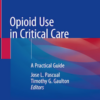Consequences of Cardiopulmonary Bypass: What the Intensivist Needs to Know
criticalcarenow.comCardiopulmonary bypass (CPB) is common for most cardiac surgeries. CPB drains blood from the heart and returns it to the proximal systemic circulation allowing perfusion during the operative period. It was pioneered in 1951 by John Gibbon and allowed the successful repair of an atrial septal defect.
The technology has advanced considerably in the following 60 years.
A rudimentary bypass circuit starts on the right side of the heart, where venous return is drawn into the bypass reservoir.
Once there, a centrifugal pump moves the blood through an oxygenator which allows for gas exchange.
Oxygenated blood then returns to the body via an arterial cannula, most commonly placed in the proximal ascending aorta.

















